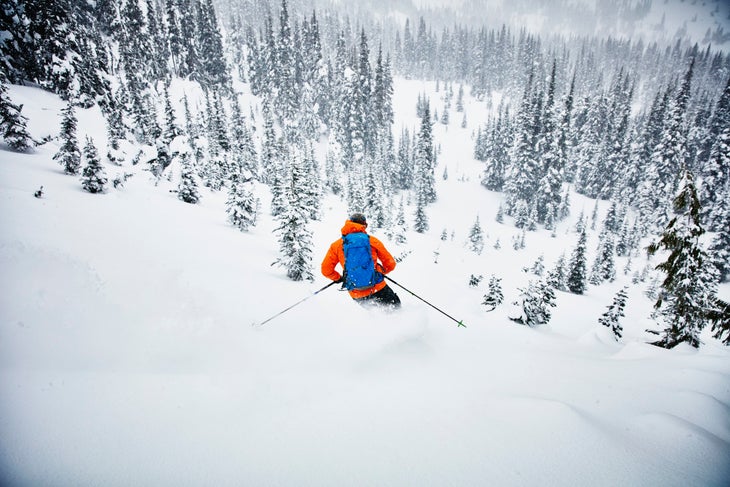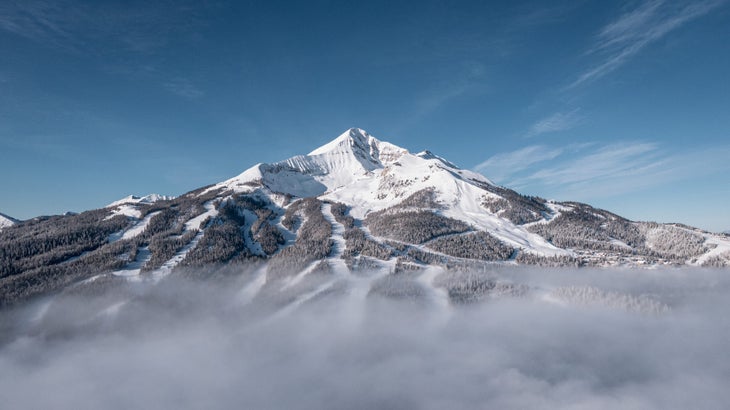Products You May Like
Get full access to Outside Learn, our online education hub featuring in-depth fitness, nutrition, and adventure courses and more than 2,000 instructional videos when you sign up for Outside+
Sign up for Outside+ today.
The long-range winter forecast could be good news for skiers living in the certain parts of the U.S. and Canada. The National Oceanic and Atmospheric Administration (NOAA) estimates that the chance of a La Niña occurring this fall and early winter is 86 percent, and the main beneficiary is expected to be mountains in the Northwest and Northern Rockies.
If NOAA’s predictions pan out, this will be the third La Niña in a row—a rare phenomenon called a “Triple Dip La Niña.” Between now and 1950, only two Triple Dips have occurred.

La Niñas are complex weather patterns that cause increased snowfall in states like Oregon, Washington, Montana, and Wyoming and reduced precipitation across the Southwest. If you live in the mountain west, including Colorado and Utah, however, your forecast is far less clear.
“Utah and Colorado are really in no man’s land when it comes to correlations between El Niño and La Niña,” says Alan Smith, professional meteorologist and operations manager at OpenSnow. “You tend to see the stronger signals the further north you go from those two states and the further south you go from those two states.” According to Smith, La Niñas do little to inform long-range forecasts in those regions.
Smith also notes that winters on the East Coast are similarly tricky to predict during La Niña years. “In the West, you’re simply looking for above-average precipitation, which typically translates to above-average snowfall, but in the East, you have temperature to worry about as well … that adds another complication.” In other words, increased precip could lead to more rain if the temperatures aren’t cooperative.
Also Read: Powder Days Could Sell Out at Jackson Hole Thanks to Discount Pre-Sale Tickets
The presence of a La Niña doesn’t always translate to higher snowfall in the North, either, as evidenced by last ski season, which saw few powder days.
However, in consecutive La Niña triplets, one winter usually involves above-average snowfall. While this historical pattern isn’t tied to any documented meteorological function, it could mean that the odds of a snowy 2022’-’23 season are higher, given the previous two La Niñas didn’t deliver the goods.
What’s more, La Niñas can be augmented by Quasi-biennial Oscillation (QBO) and Pacific Decadal Oscillation (PDO). These fancy-sounding climatic phenomena involve the cyclical shifting of tropical trade winds and ocean temperatures. A current “cooling” Pacific Ocean phase and westerly trade winds could create favorable precipitation conditions this winter, which would mean more powder days for us skiers.

While encouraging, these signs don’t guarantee that we’ll get relentlessly snowed in. After all, forecasting is an inherently inexact science. A group of researchers with the Journal of Atmospheric Sciences found that short-term weather predictions have a potential limit of about two weeks. NOAA shares this sentiment, noting that forecasts drop dramatically in accuracy beyond the 10-day mark.
Long-term weather projections face similar challenges. Smith, who makes his living tinkering with meteorological models, isn’t shy about highlighting the shortcomings of long-term forecasting. He thinks early winter predictions have about a “50-50” shot of getting it right.
His recommendation? Keep your eyes on the Northwest and Northern Rockies this upcoming season, as they could receive higher snowfall averages. And, if possible, wait until a week in advance before committing to a multi-day ski trip so you can time it with a storm. “It’s really about playing the odds,” says Smith.
